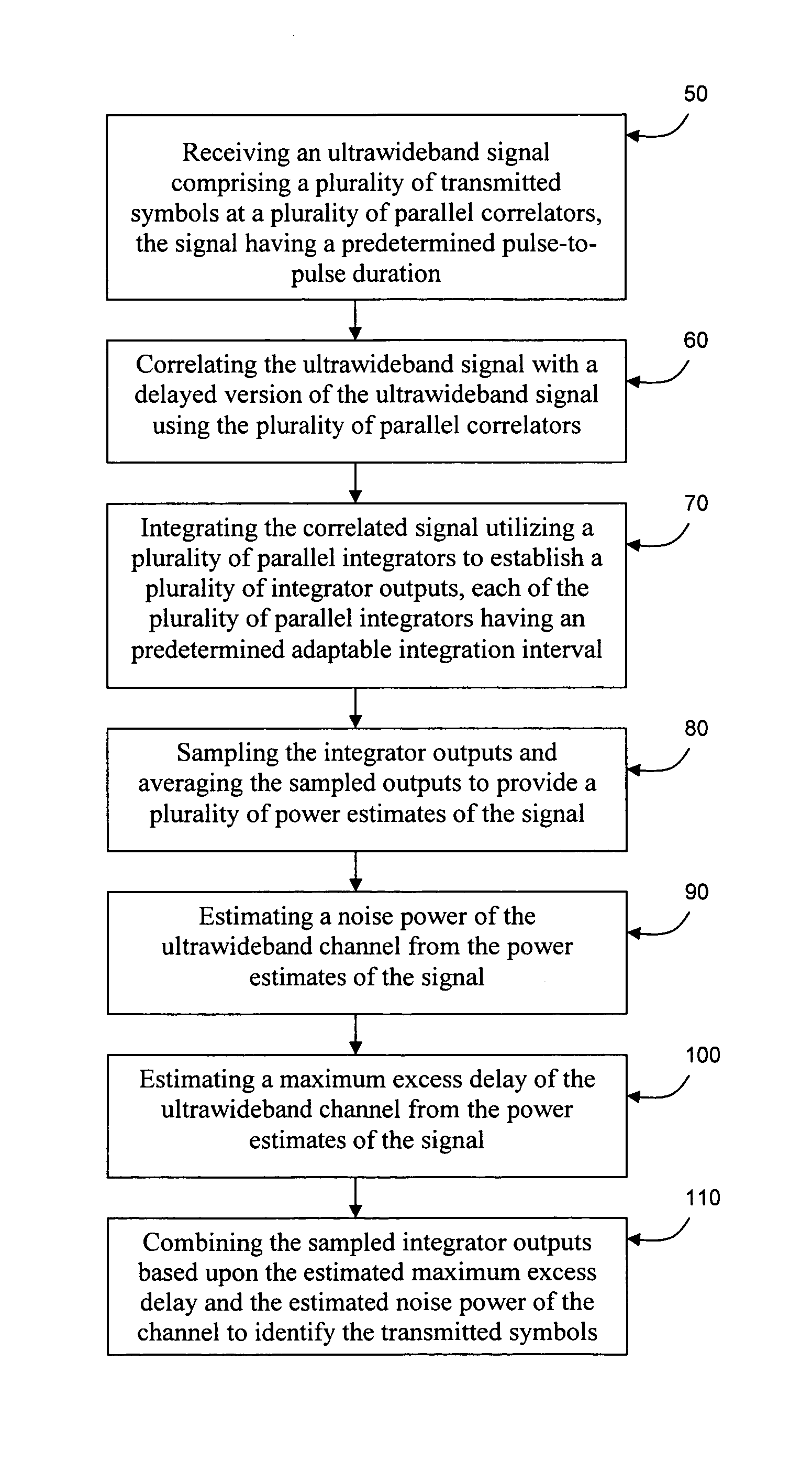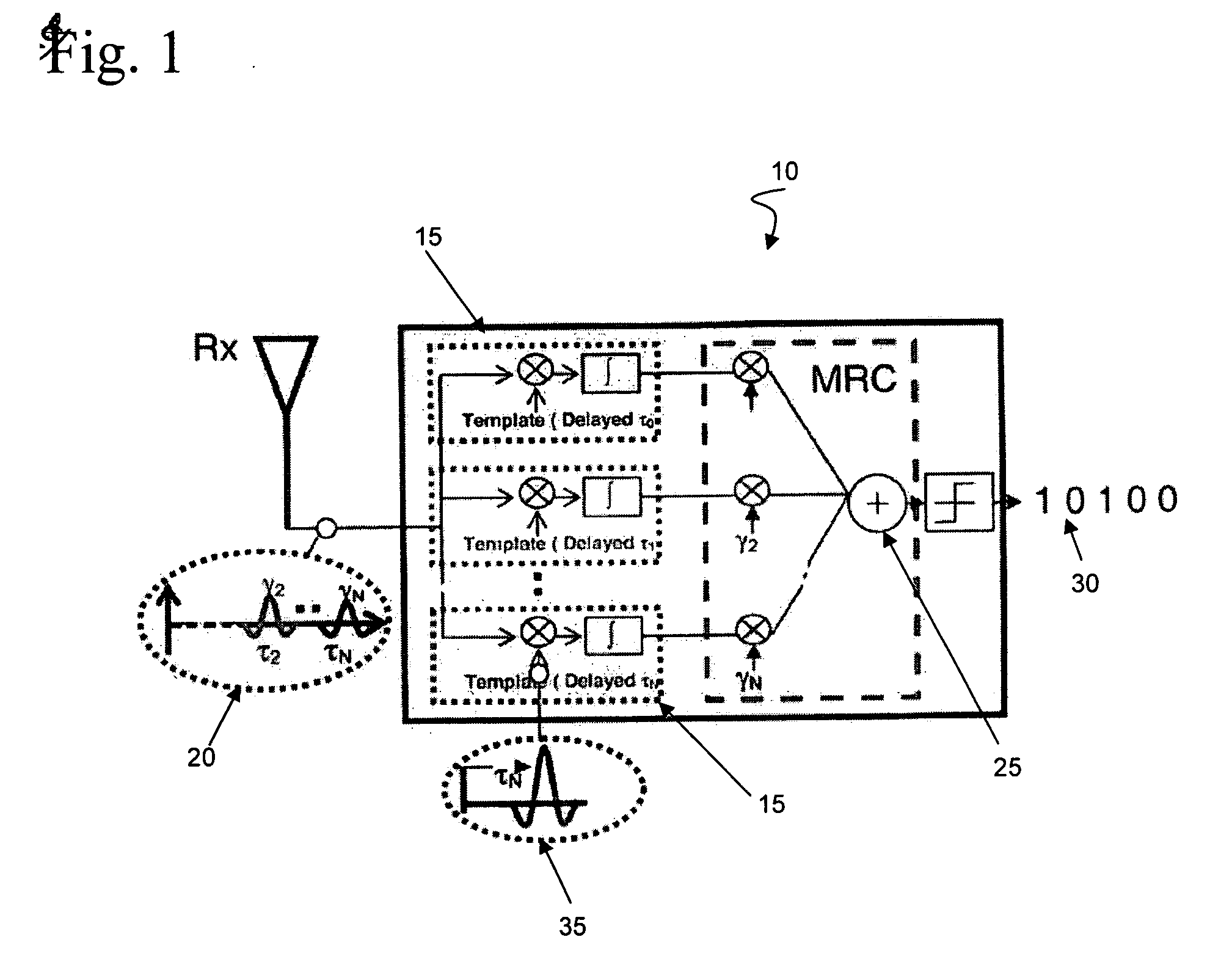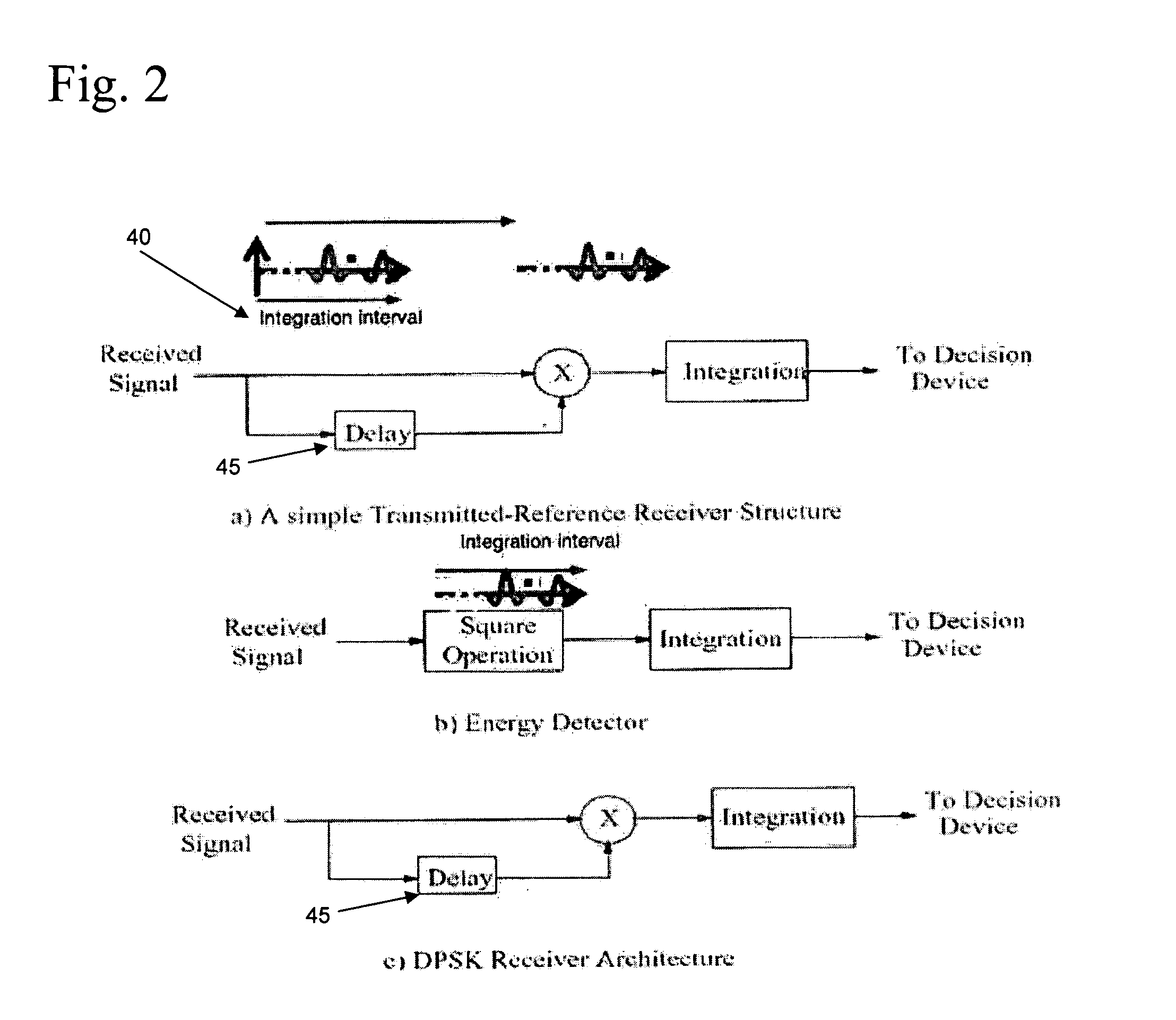Adaptive Ultrawideband Receiver and Method of Use
a receiver and ultrawideband technology, applied in the field of adaptive ultrawideband receiver and method of use, can solve the problems of spectral crowding of future technologies, difficult to meet the demand for higher capacity and data rates, and major problems such as coexistence of wireless devices, so as to reduce the ipi, reduce the ipi, and reduce the complexity of the delay spread and/or maximum excess delay estimation.
- Summary
- Abstract
- Description
- Claims
- Application Information
AI Technical Summary
Benefits of technology
Problems solved by technology
Method used
Image
Examples
Embodiment Construction
[0027] With reference to FIG. 5, in accordance with an embodiment of the present invention a method of non-coherent ultrawideband communication is provided, the method including the steps of, receiving an ultrawideband signal comprising a plurality of transmitted symbols at a plurality of parallel correlators, the signal having a predetermined pulse-to-pulse duration 50, correlating the ultrawideband signal with a delayed version of the ultrawideband signal using the plurality of parallel correlators 60, integrating the correlated signal utilizing a plurality of parallel integrators to establish a plurality of integrator outputs, each of the plurality of parallel integrators having an predetermined adaptable integration interval 70, sampling the integrator outputs and averaging the sampled outputs to provide a plurality of power estimates of the signal 80, estimating a noise power of the ultrawideband channel from the power estimates of the signal 90, estimating a maximum excess del...
PUM
 Login to View More
Login to View More Abstract
Description
Claims
Application Information
 Login to View More
Login to View More - R&D
- Intellectual Property
- Life Sciences
- Materials
- Tech Scout
- Unparalleled Data Quality
- Higher Quality Content
- 60% Fewer Hallucinations
Browse by: Latest US Patents, China's latest patents, Technical Efficacy Thesaurus, Application Domain, Technology Topic, Popular Technical Reports.
© 2025 PatSnap. All rights reserved.Legal|Privacy policy|Modern Slavery Act Transparency Statement|Sitemap|About US| Contact US: help@patsnap.com



